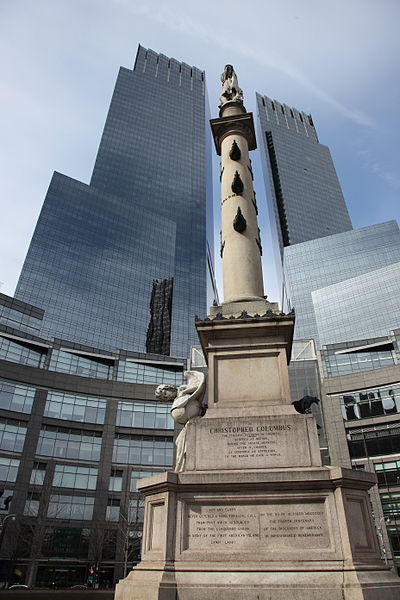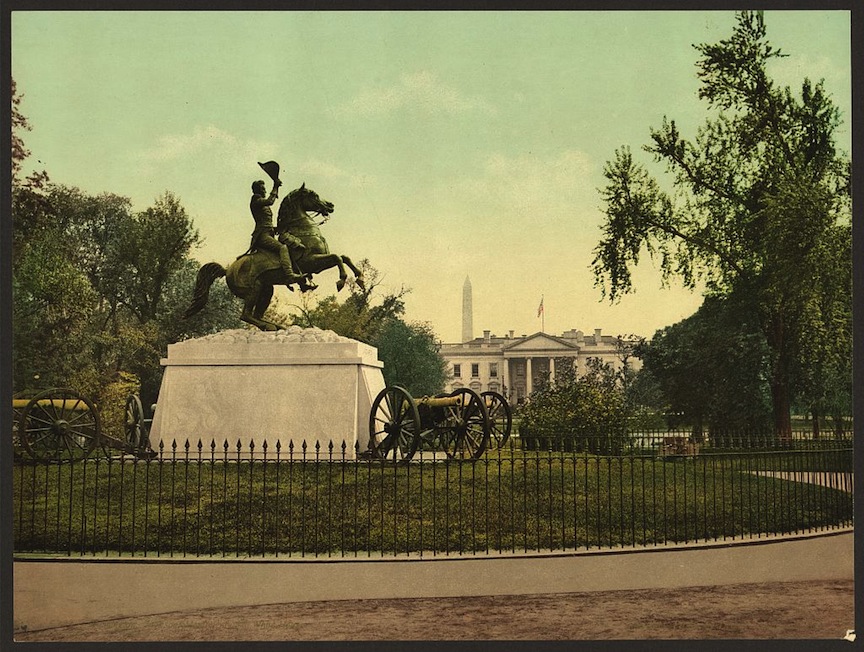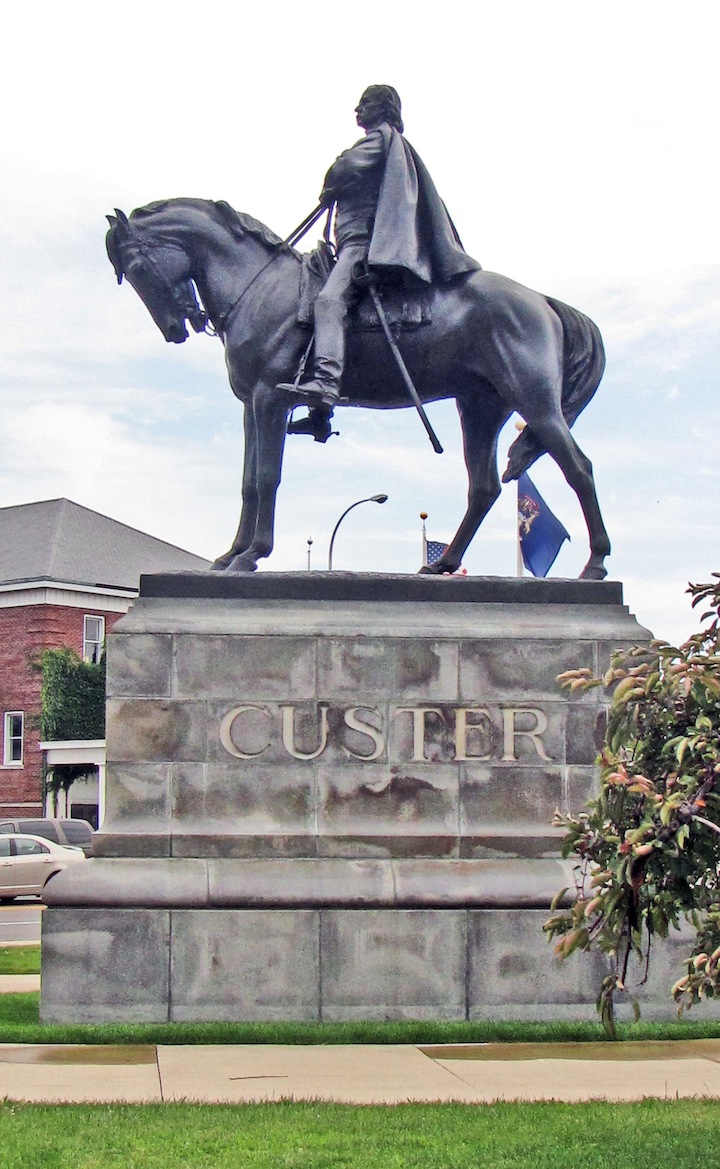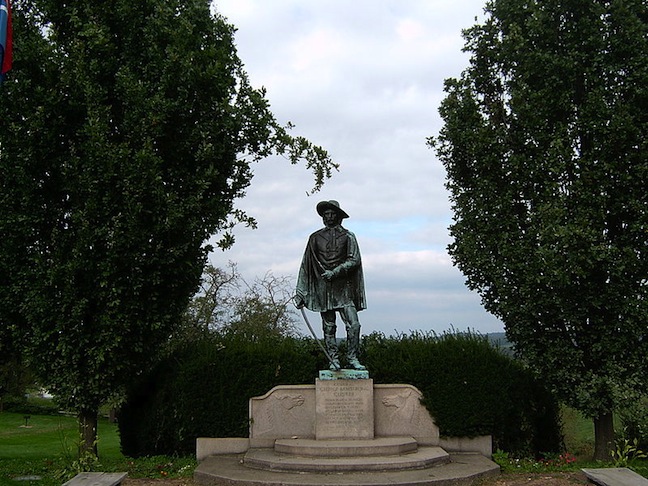5 Monuments Guaranteed to Drive Natives Nuts

The Statue of Liberty on Ellis Island in New York City was dedicated on October 28, 1886.
Carving the faces of “founding fathers” who weren’t good for Indian policy into sacred mountains, having to walk by a monument of a man who was responsible for the death of countless Indigenous Peoples, building statues of men who killed countless Natives… why are there so many monuments for those who don’t deserve it?
Statue of Liberty
At a time when Natives were being persecuted, France donates the Statue of Liberty to the United States. A giant statue, the National Park Service calls a “universal symbol of freedom and democracy.” Let’s consider this: the 305-foot-tall statue was dedicated on October 28, 1886 and designated a National Monument in 1924. In 1886, Geronimo was the last Chiricahua Apache to surrender; he had spent his life resisting colonization of his homeland in the Southwest. So, while the U.S. is welcoming others, it was imprisoning this country’s Indigenous Peoples on reservations. In 1924, the Indian Citizenship Act was passed, which was yet another step by the government to assimilate the Indian population into white culture.
Facebook commenter Marie Sandvig put it quite well in regard to the Statue of Liberty being an atrocious monument: “Liberty for who, exactly?”
Mount Rushmore
Not only was Mount Rushmore carved into a sacred place in the Black Hills, Natives have always questioned who the “real” founding fathers of this country are. And that is not the faces carved into the mountain.
Before anyone called it Mount Rushmore, the Sioux called the mountain Six Grandfathers. It was named Rushmore in 1884 when New York City attorney Charles E. Rushmore asked what it was called.
“From the Indian perspective, the monument at Mount Rushmore was a symbol of the dominant culture’s arrogance, racism, and spiritual insensitivity. Carving icons of presidents who were known for their insensitivity to Indian issues into a living sacred mountain would be similar to painting anti-Christian graffiti inside of a cathedral, or anti-Semitic symbols inside a synagogue,” points out a post on Native American Netroots.
RELATED: A Different View of Mount Rushmore
Columbus Circle
In bustling New York City, Christopher Columbus—a man who took Natives as slaves and brought disease to Turtle Island—has an important city intersection named after him at Columbus Circle as well as a large monument in the center of that circle. A marble statue of Columbus sits on top of a 70-foot granite column was created by Italian sculptor Gaetano Russo and completed in 1892 to celebrate the 400th anniversary of Columbus’ landing here, which was a harbinger of more death for the Indigenous Peoples here.
“Here’s a statue of Christopher Columbus,” Luis Ramos said, waving toward the center of Columbus Circle, “and there’s still a federally recognized holiday. They don’t realize the destruction still being implemented, the genocide.” Ramos was at Columbus Circle in 2012 for an Indigenous Day of Remembrance, which is held the day before Columbus Day.
RELATED: Natives Gather in Columbus Circle for ‘Indigenous Day of Remembrance’ to Honor Ancestors
Andrew Jackson Monument
Why does a man nicknamed “Indian Killer” and “Sharp Knife” deserve to have more than one monument extolling his deeds? The proponent of Indian removal also earned the top spot on our list of worst U.S. presidents. Monuments to this brutal president can be found in Lafayette Park in Washington, D.C. and another, albeit smaller one, marks his birthplace in Lancaster, South Carolina.
“Andrew Jackson was a wealthy slave owner and infamous Indian killer, gaining the nickname ‘Sharp Knife’ from the Cherokee,” writes Amargi on the website Unsettling America: Decolonization in Theory & Practice. “He was also the founder of the Democratic Party, demonstrating that genocide against indigenous people is a nonpartisan issue. His first effort at Indian fighting was waging a war against the Creeks. President Jefferson had appointed him to appropriate Creek and Cherokee lands. In his brutal military campaigns against Indians, Andrew Jackson recommended that troops systematically kill Indian women and children after massacres in order to complete the extermination. The Creeks lost 23 million acres of land in southern Georgia and central Alabama, paving the way for cotton plantation slavery. His frontier warfare and subsequent ‘negotiations’ opened up much of the southeast U.S. to settler colonialism.”
George Armstrong Custer Equestrian Monument
Defeated at Greasy Grass, or the Battle of Little Bighorn as it’s called in history books, it’s often forgotten that Custer was the one who started that fight by attacking an Indian village. It’s just the force of Lakota, Cheyenne and Arapaho who finished it. It could also be said that it is because of Custer that the Fort Laramie Treaty of 1868 was not abided by and the Black Hills were taken away from the Lakota. He led an expedition there in 1874 and discovered gold, which prompted the United States government to violate the treaty, take back the land and move the Lakota to reservations.
In his honor, the George Armstrong Custer Equestrian Monument was erected in 1910 in Monroe, Michigan, his childhood home. There is also a memorial to him, a bronze statue in his birthplace in New Rumley, Ohio.
This is in no way an all-inclusive list, there are hundreds of monuments around the country that should never have been built. Tell us what monuments you think shouldn’t exist.
Read more at http://indiancountrytodaymedianetwork.com/2013/07/31/5-monuments-guaranteed-drive-natives-nuts-150659




